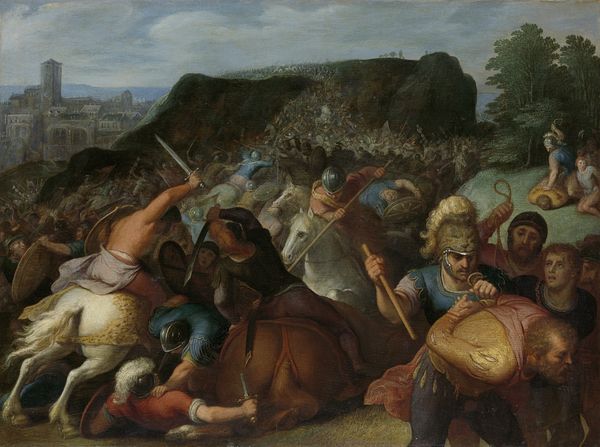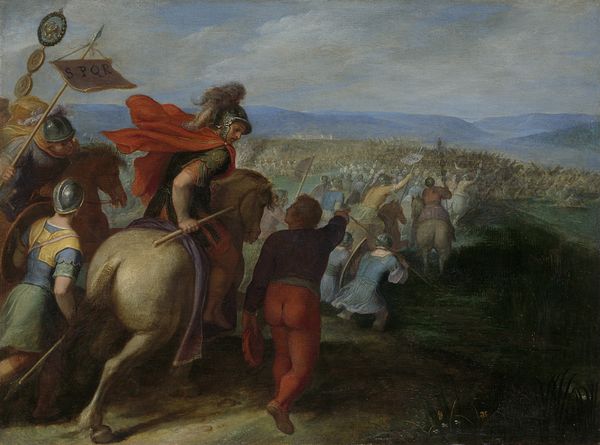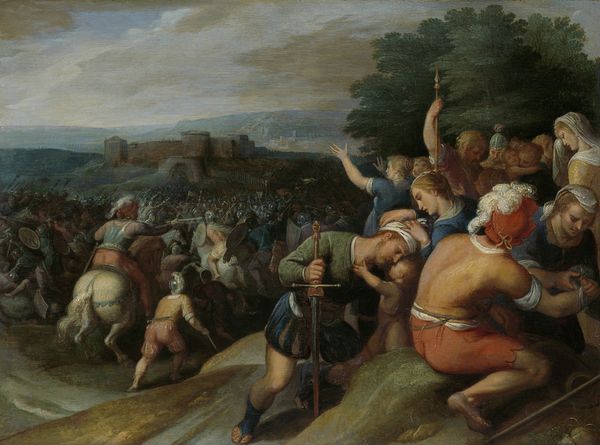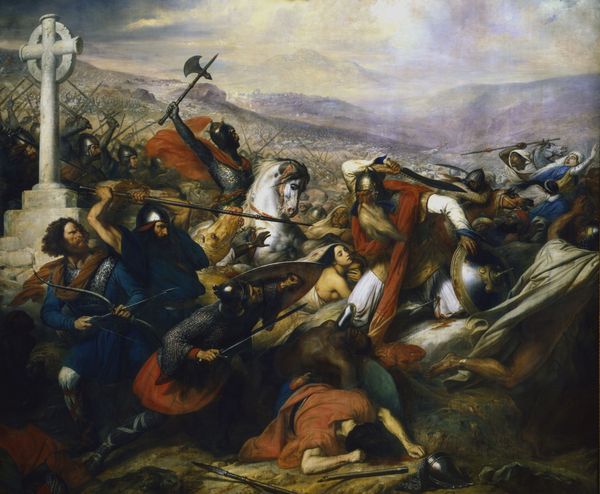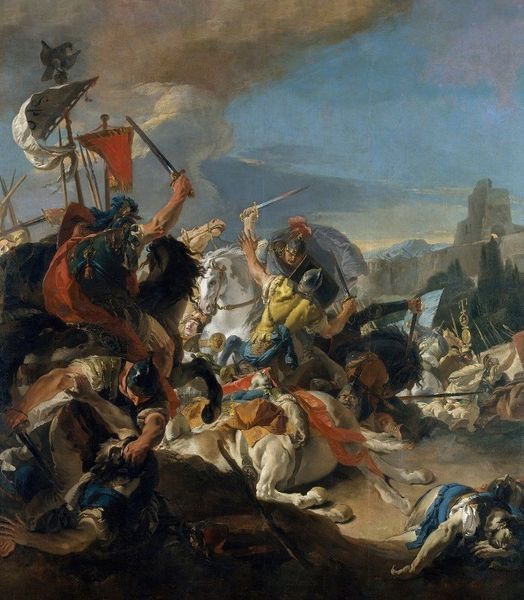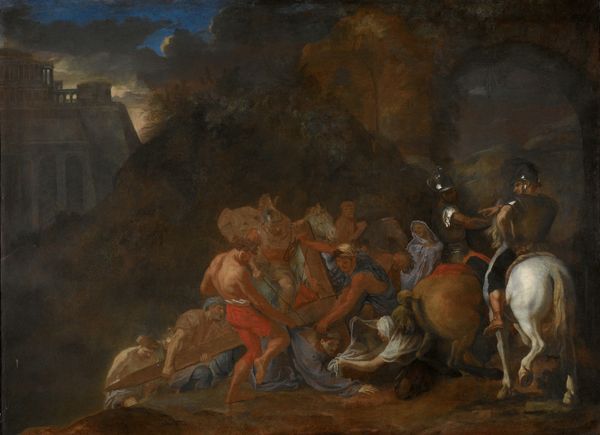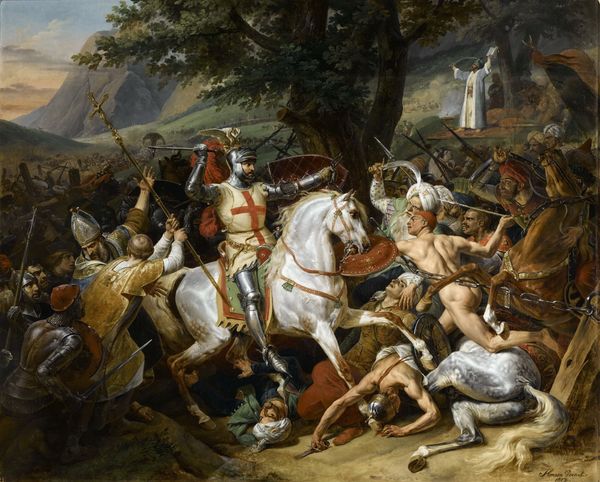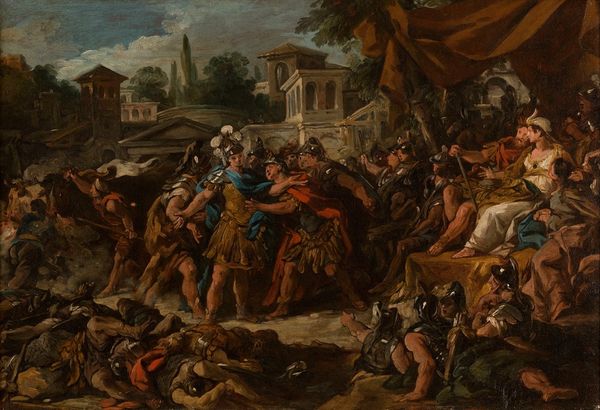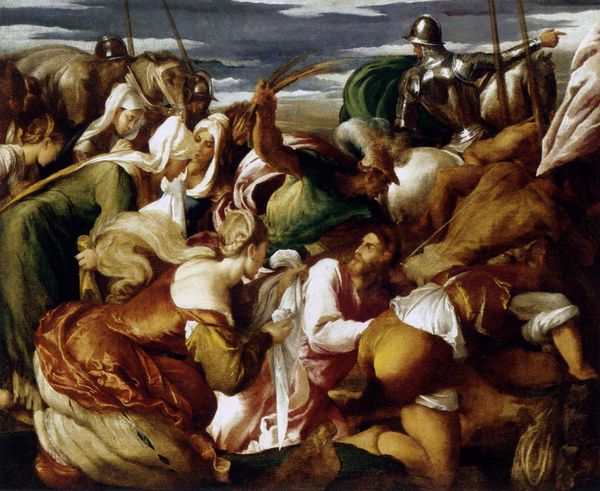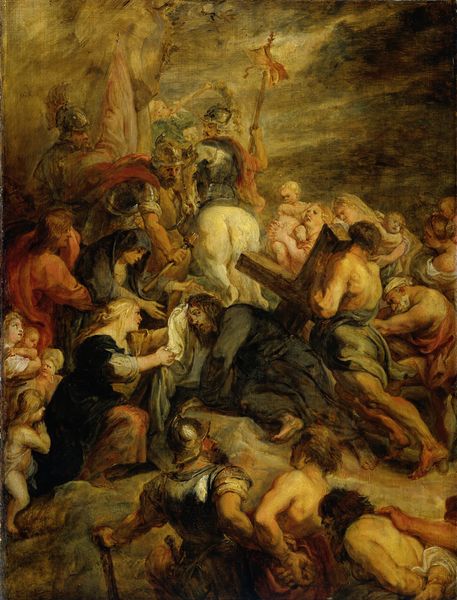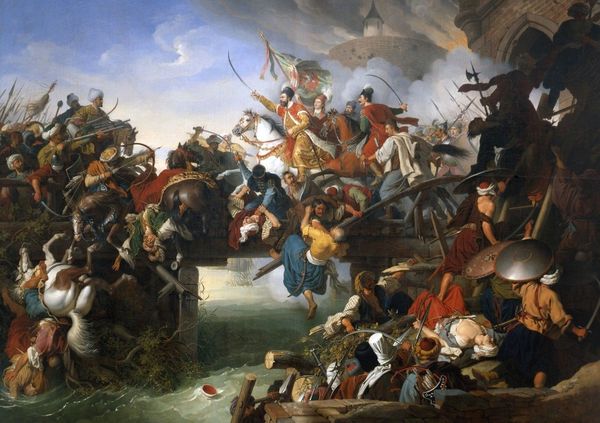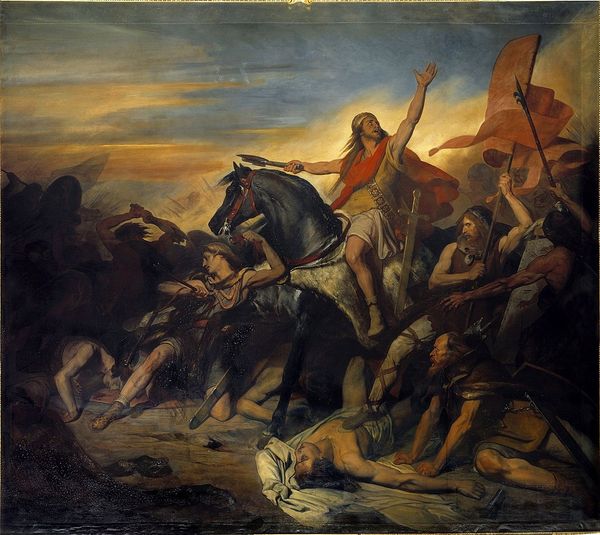
painting, oil-paint
#
narrative-art
#
baroque
#
painting
#
oil-paint
#
landscape
#
figuration
#
oil painting
#
history-painting
Dimensions: height 38 cm, width 52 cm
Copyright: Rijks Museum: Open Domain
Editor: Here we have "The Batavians Defeating the Romans on the Rhine," an oil painting by Otto van Veen, created between 1600 and 1613. It's grand, imposing. It feels like I'm looking at a chaotic, bloody dance! What catches your eye, what do you see in this clash? Curator: A dance, you say? I like that. To me, it's a rather stirring echo of Dutch resistance. Van Veen was painting at a time when the Dutch Republic was fighting for independence from Spain. And those Romans? Well, think of them as stand-ins for the Spanish overlords. It's a history painting dripping with patriotism, wouldn't you say? But look closer, beyond the bodies. Do you see how the light falls? Editor: I see that there is no true "light." It is distributed among the bodies. What is the symbolic sense of this "distributive" lighting? Curator: Perhaps that it wants to be more accessible? Rather than a spotlight shining on a hero, it feels like shared valor among the Batavians, each figure illuminated in their struggle, in this shared fight for freedom? Of course, Van Veen’s Baroque theatricality shines through. I can almost hear the clashing of steel and the battle cries. Editor: It's interesting you mention theatricality. It's as if he's staging a historical drama rather than simply documenting a battle. I noticed a couple of soldiers lying at the front of the image. Is that meant to add dynamism to the artwork? Curator: Exactly! Think of it as drawing you into the heart of the action. It's a bold, if somewhat gruesome, invitation. And that panoramic vista of clashing armies is meant to inspire awe, perhaps even a touch of fear, but, mainly, that it’s supposed to instill the value of unity within the then Republic, who, despite the war, seemed anything but unified. Editor: So, this isn't just a painting of a battle, but a charged, partisan piece, drenched in political meaning for its time! Curator: Indeed! It's history, propaganda, and art all rolled into one turbulent canvas. Always exciting to revisit, no? Editor: Absolutely, I now see the symbolic density in the visual chaos. Thanks for unveiling layers I completely missed before!
Comments
rijksmuseum about 2 years ago
⋮
In 1613, the Dutch parliament (States General) commissioned Otto van Veen to paint twelve paintings depicting the revolt of the Batavians against the Romans in AD 69 and 70. These were displayed in Binnenhof, the central government building in The Hague. In the early years of the Dutch Republic, many compared their own revolt against Spain to the Batavian uprising.
Join the conversation
Join millions of artists and users on Artera today and experience the ultimate creative platform.
